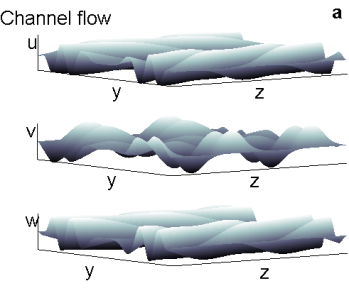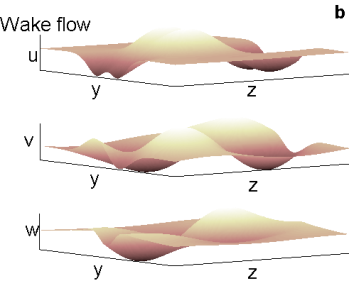Hydrodynamic Stability
- Details
- Last Updated on Monday, 19 January 2015 10:13
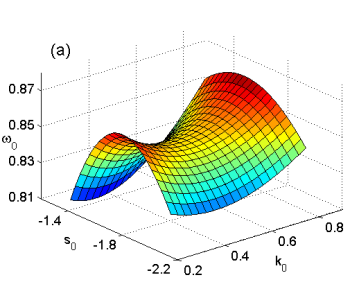 |
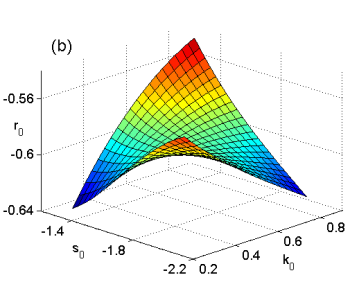 |
Figure 1. Bluff-body wake. Saddle points multidimensional map: (a) ω0(k0,s0) and (b) r0(k0,s0), Re=35, 4 diameters downstream the body.
|
|
|
Figure 2. Snapshots of the perturbation velocity field in the physical plane (y, z) normal to the streamwise direction, x. (a) Channel flow: Re = 10000, t = 20, ϕ = 3/8 π, antisymmetric initial condition, k = 1.5. (b) Wake flow: Re = 100, wake section: 50 body lengths downstream, t = 45, ϕ = 3/8 π, antisymmetric initial condition, k = 0.7.
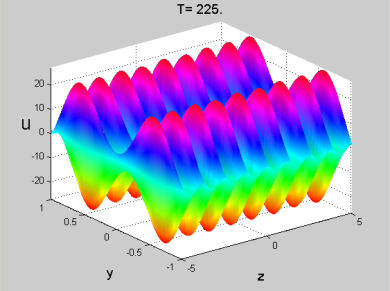 |
Figure 3. Longitudinal component of the perturbation velocity field in the physical plane (y, z) normal to the streamwise direction, x. Poiseuille channel flow: Re = 10000, t = 225, ϕ = π/2, antisymmetric initial condition, k = 5. See the MOVIE for the complete temporal evolution.
|
 |
Figure 4. Amplified configuration. Wake flow (R=100, x_0=10, k=1.7, symmetric initial condition, Φ=π/8). Perturbation velocity field in the physical plane (y, z) normal to the streamwise direction, x. See the MOVIE for the complete temporal evolution. | |
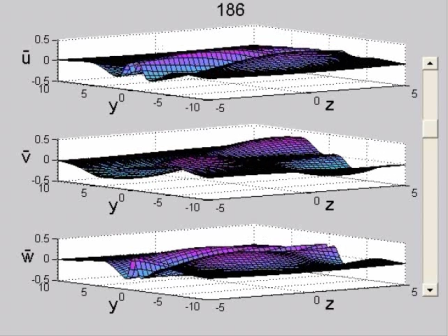 |
Figure 5. Weakly amplified configuration. Wake flow (R=100, x_0=10, k=0.6, asymmetric initial condition, Φ=π/4). Perturbation velocity field in the physical plane (y, z) normal to the streamwise direction, x. See the MOVIE for the complete temporal evolution. | |
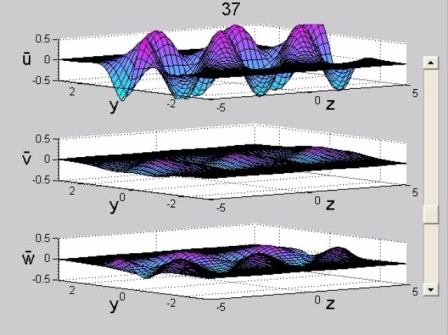 |
Figure 6. Damped configuration. Wake flow (R=100, x_0=10, k=1.7, symmetric initial condition, Φ=3/8π). Perturbation velocity field in the physical plane (y, z) normal to the streamwise direction, x. See the MOVIE for the complete temporal evolution. |



